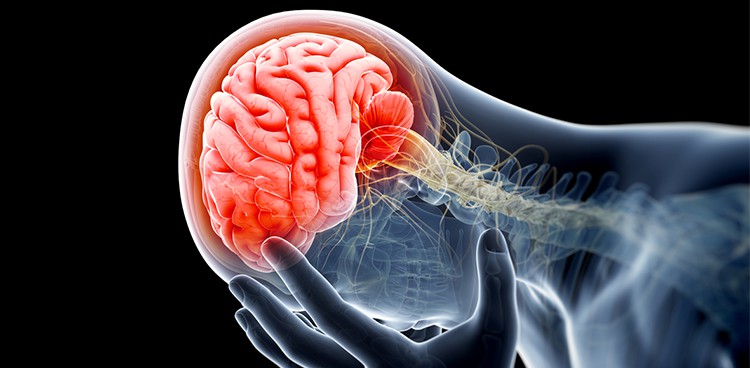
Welcome to Forbidden Fromage, a series exploring cheesy taboos and prohibitions. Intern Johnisha Levi will look at everything from navigating kosher restrictions and hip hop MCs’ use of cheese and dairy as metaphors for illicit profit and sex to the paleo diet’s dairy prohibition. You’ll get a little history, religion, pop culture, science, and medicine along the way, as we cover thousands of years in the blink of some blog posts.
At culture, our job is to revel in the full spectrum of glorious cheese. We taste it, analyze it, live it, and write about it. Sometimes, we’ll sample 15 cheeses in one sitting. That sounds pretty amazing, right? But here’s a frightening thought: What if eating all that cheese resulted in an onslaught of unpleasant symptoms and even hospitalization?
In this week’s Forbidden Fromage, we’ll examine what happens when cheese wields a toxic effect on the body.
The danger is all rooted in two compounds that are derivatives of the amino acids tyrosine and histadine. You may recall your science teacher referring to amino acids as “the building blocks” of life. That’s because huge protein molecules, including the enzymes that catalyze the various reactions in our bodies, are made of chains of amino acids. Tyrosine might be particularly familiar to cheese peeps because it is responsible for those firm white crystals in Swiss and Romano, as well some of the interior crystals in aged Parmigiano Reggiano and gouda. (You can read more in this fascinating post about Cheese Crystals).
The two compounds that concern us are tyramine and histamine. And SPOILER ALERT: these bad cheese trips affect only a select group of people, so don’t go throwing out your wedges and wheels just yet.
Migraines and Cheese Crisis
Most people are copacetic with tyramine. An ordinary person can tolerate as much as 400mg of tyramine, which translates into a more-than-generous helping of tyramine-rich foods, including aged cheese. It’s a good thing, because tyramine naturally occurs in plants and animals and is produced during aging, fermentation, and spoilage. While avocados, peanuts, chocolate, alcoholic beverages, miso, kimchi, and teriyaki sauce are all edibles that make my world a happier place, these tyramine-rich foods may have dire consequences for migraine suffers. While the scientific evidence is not definitive, some neurologists have credited these foods as triggers for the neural changes that cause category-5 headaches with symptoms inclusive of light flashes, dizziness, nausea, and numbness.
When else does tyramine present a danger? Well, this can happen when the body is unable to break down and excrete tyramine. An enzyme called monoamine oxidase normally performs this function, in addition to breaking down certain neurotransmitters that can affect mood, such as serotonin. MAO inhibitors, anti-depressants that work by blocking the enzyme, are problematic for patients eating a diet heavy in tyramine. For people taking these inhibitors, as little as 6mg of tyramine can start to cause minor symptoms (i.e., elevated blood pressure and nausea), while 25 mg of tyramine or more may result in a hypertensive crisis (i.e., dangerously high blood pressure precipitating stroke or even death). For some perspective on those numbers: Stilton contains anywhere from 33 to 61 mg of tyramine in a 28 gram (one-ounce) sample, with Camembert and Swiss registering at 38 mg and 28 mg respectively. The hypertensive crisis that results is also known as “the cheese effect” or “cheese crisis” because it was first observed after consumption of cheese, although it occurs following consumption of other tyramine-laden foods.
Histamine Poisoning
Next up is histamine, the neurotransmitter involved in immune responses. It may sound familiar to you, as we garden-variety allergy sufferers have to take antihistamines to control symptoms such as inflammation, rash, nasal congestion, and watery eyes. Again, for most people, consumption of histamine is not in any way life-threatening or serious. Bacteria such as lactobacilli (used in production of gouda) are responsible for histamine content of aged cheese. Additionally, variables such as the amount of salt, pH conditions, and the temperature at which a cheese is ripened can impact the amount of histamine in the finished product.
Danger begins to lurk when certain categories of drugs such as the anti-tuberculosis drug isoniazid or antidepressants suppress the body’s ability to metabolize histamine or when histamine levels exceed around 50 mg per 100 grams of food. Under these more extreme conditions, a person can suffer from histamine poisoning, alternatively known as histamine toxicity. This is a severe and at times life-threatening allergic reaction. While histamine toxicity is more frequently associated with consumption of fish, especially spoiled fish, cheese has also been a culprit on some notable occasions. In the Netherlands, rennet contaminated by salt-tolerant lactobacilli resulted in histamine levels of 85 mg/100g cheese in Gouda. In the U.S., there were two notable instances involving the consumption of Swiss cheese. In 1978, 38 people were taken ill; two years later, six people aboard a Naval ship were symptomatic.
So there you have it! For the vast majority of you, your cheese crisis may be opening your fridge and finding you’ve run out of your favorite chèvre, but for others it can mean some serious health consequences.
Next week in Forbidden Fromage? The wrap-up.
Feature Photo Credit: “Medical illustration – Swollen, Painful Brain” by Sebastian Kaulitzki | Shutterstock



